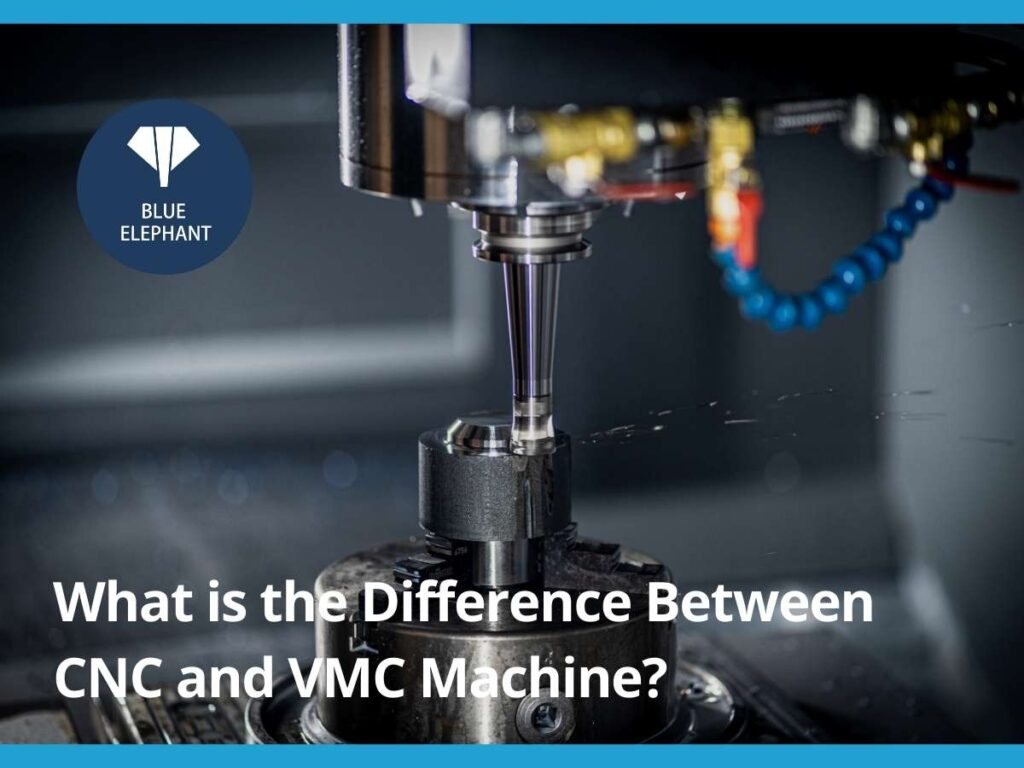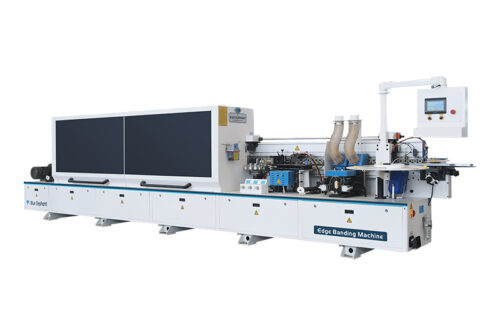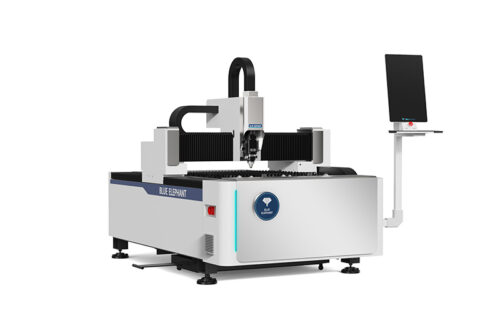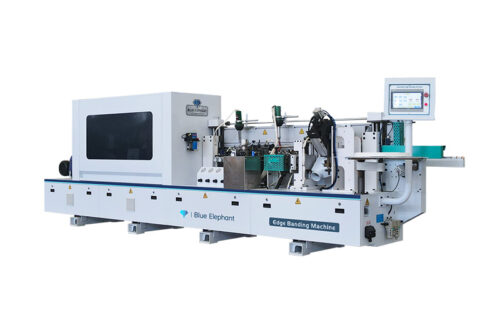I once paid too much for a machine I didn’t really need.
A supplier convinced me that a VMC was the best choice. It had the right specs, good reviews, and seemed powerful enough for my projects. But after months of struggling, I realized something: I actually needed a CNC lathe, not a VMC.
That mistake cost me time and money.
If you’re wondering about the difference between CNC and VMC machines, you’re in the right place. Knowing what each machine does—and which one fits your needs—can save you from expensive mistakes.
This guide will break it down in simple terms. You’ll learn:
- What CNC and VMC mean.
- How they work.
- Which one is right for your business.
By the end, you’ll have a clear answer—and the confidence to make the right choice.
Let’s get started!
1. Quick Comparison Chart
Choosing between CNC and VMC machines can feel overwhelming. But when you break it down, the decision becomes much clearer. Here’s a quick side-by-side comparison before we dive into the details.
| Feature | CNC Machine | VMC Machine |
| Definition | Any computer-controlled machining tool that follows programmed instructions. | A specific type of CNC milling machine with a vertical spindle. |
| Function | Used for cutting, shaping, engraving, and drilling various materials. | Primarily used for high-precision metal cutting and milling. |
| Material Compatibility | Works with wood, plastic, foam, composites, and metals (depends on machine type). | Best for metals like aluminum, steel, and titanium. |
| Axis Movement | Can be 3-axis, 4-axis, or 5-axis, depending on machine type. | Usually 3-axis, but some models offer 4-axis and 5-axis capabilities. |
| Tooling System | Uses various tools, including router bits, laser heads, plasma torches, and grinding wheels. | Uses high-speed milling cutters and automated tool changers for fast, precise machining. |
| Precision & Accuracy | Varies by machine type—some offer high precision, while others focus on speed. | Higher accuracy for metal cutting due to its rigid design and stable spindle. |
| Common Applications | Used for furniture, signage, mold making, aerospace, and general fabrication. | Used for metalworking, aerospace, medical, and automotive industries. |
| Cost & Investment | More affordable options available, from desktop routers to entry-level CNC mills. | Higher initial cost, but necessary for high-precision metal machining. |
Now that you’ve seen the key differences, let’s break things down even further—so you can make the best decision for your business.
2. What is CNC?
I remember watching a machinist cut metal by hand. He adjusted the tool, measured carefully, and guided every movement himself. It took time. It took skill. And if he made a mistake, he had to start over.
That was before CNC.
CNC stands for Computer Numerical Control. It’s a way of automating machines so they follow precise instructions without needing a person to control every movement. Instead of turning a wheel or pulling a lever, operators program the machine using software. The machine reads the instructions and does the work on its own.
This changed everything.
How CNC Machines Work
A CNC machine follows a digital blueprint. Think of it like GPS for manufacturing. Instead of a driver steering a car, the machine follows a programmed path to cut, drill, or shape materials exactly as designed.
Here’s how it works:
- A computer program tells the machine what to do. This program is written using G-code, a type of machine language.
- The CNC machine reads the instructions. It controls the movement, speed, and depth of the cutting tool.
- The machine works automatically. It cuts, drills, or engraves with extreme accuracy far better than manual work.
Because everything is controlled by software, CNC machines reduce human error. They also work faster, run longer, and make parts that are identical every time. This makes them ideal for factories, workshops, and small businesses.
But not all CNC machines are the same.
Types of CNC Machines
Many people hear “CNC” and think of a VMC (Vertical Machining Center). But that’s just one type. CNC machines come in different forms, each built for a specific job.
Here are the most common types:
- CNC Milling Machines: These machines use rotating tools to remove material. They come in two types:
- Vertical (VMC): The spindle moves up and down.
- Horizontal (HMC): The spindle moves side to side.
- CNC Lathes (Turning Centers): These machines rotate the material while cutting. They’re great for making cylindrical parts like shafts and pipes.
- CNC Routers: Used for wood, plastic, and soft metals. Popular for furniture, signs, and artistic carvings.
- CNC Plasma Cutters: Cut through metal using a high-speed jet of plasma. Common in metal fabrication.
- CNC Laser Cutters: Use a high-powered laser to engrave or cut materials like metal, wood, acrylic, and glass.
- CNC Grinding Machines: Used for precision shaping and finishing of metal parts.
- CNC EDM (Electrical Discharge Machines): These machines remove metal using electrical sparks. Often used for hardened materials that are difficult to cut.
CNC isn’t just a type of machine it’s a technology that changed manufacturing forever. Whether you’re cutting, engraving, or shaping metal, there’s a CNC machine built for the job.
3. What is a VMC Machine?
I used to think all CNC machines worked the same. You load the material, start the program, and let the machine do its job. But after working with different machines, I quickly learned that not all CNC machines are built for the same purpose.
That’s where VMCs (Vertical Machining Centers) come in.
A VMC is a specific type of CNC milling machine. The difference? The spindle is vertical. That means the cutting tool moves up and down, while the material stays in place on a flat table.
This setup makes VMCs great for precision milling, drilling, and cutting. They can shape metal, plastic, and other materials into complex parts with high accuracy.
How VMC Machines Work
A VMC operates with computer-controlled movements, just like other CNC machines. But its design allows it to handle detailed cutting and engraving with ease.
Here’s how it works:
- A digital program tells the machine what to cut.
- The spindle rotates at high speed while the cutting tool moves along the programmed path.
- The table holds the material in place, while the machine carves out precise shapes.
VMCs are used in automotive, aerospace, medical, and mold-making industries because they can produce complex parts with extreme accuracy. Many also have multi-axis control, meaning they can move in different directions to create more detailed shapes.
But not all VMCs are the same.
Types of VMCs
VMCs come in different configurations, depending on how many axes they have. More axes mean more flexibility and the ability to create complex shapes without moving the material too much.
- 3-Axis VMC: The most common type. It moves in three directions:
- X-axis (left to right)
- Y-axis (front to back)
- Z-axis (up and down)
- Best for: Basic milling, drilling, and cutting jobs.
- 4-Axis VMC: Adds a rotating axis (A-axis) to the standard three axes.
- This allows the machine to rotate the material while cutting, making it easier to work on different sides of a part without resetting it.
- Best for: More complex machining tasks, including curved surfaces and cylindrical parts.
- 5-Axis VMC: The most advanced type. It adds two extra rotating axes (A-axis and B-axis), allowing the cutting tool to approach the material from almost any angle.
- Best for: Aerospace parts, medical implants, and detailed mold-making.
VMCs are powerful machines that bring speed, precision, and efficiency to manufacturing. Whether you need basic milling or advanced 5-axis machining, there’s a VMC built for the job.

4. Machine Functionality
The first time I worked with a CNC machine, I assumed all of them worked the same way. If it had a screen, buttons, and ran on software, it had to be the same kind of machine, right?
I was wrong.
CNC (Computer Numerical Control) is a broad term. It refers to any machine that follows a digital program to cut, shape, or engrave materials. The computer tells the machine exactly where to move and how fast to cut. This makes CNC machines incredibly precise, fast, and efficient.
But not all CNC machines are VMCs (Vertical Machining Centers).
A VMC is a specific type of CNC milling machine. Its key feature? The vertical spindle. This means the cutting tool moves up and down while the material stays fixed on a table.
Here’s how they compare:
- CNC Machines (General Category):
- Includes routers, lathes, grinders, laser cutters, and milling machines.
- Can have different spindle orientations (horizontal, vertical, or rotating).
- Used in various industries for different machining needs.
- VMC Machines (A Specific Type of CNC):
- Always has a vertical spindle.
- Mainly used for milling, drilling, and cutting.
- Common in precision industries like aerospace, automotive, and mold-making.
So, while all VMCs are CNC machines, not all CNC machines are VMCs. Understanding this difference helps you choose the right machine for the job—and avoid costly mistakes.
5. Axis Orientation and Movement
I once watched a machinist struggle to cut a complex part. He had to stop, reposition the material, and restart—over and over. It took time. It wasn’t efficient. Then I saw a 5-axis CNC machine do the same job in one smooth motion. That’s when I realized how important axis movement really is.
CNC Machines: Different Axis Movements
CNC machines don’t all move the same way. Some are simple, moving in just three directions, while others rotate and tilt for complex cutting.
- 3-Axis CNC Machines: Move in three directions:
- X-axis (left to right)
- Y-axis (front to back)
- Z-axis (up and down)
- Good for basic milling, drilling, and cutting.
- 4-Axis CNC Machines: Add a rotating A-axis, letting the machine tilt the material.
- Ideal for cutting multiple sides without stopping.
- 5-Axis CNC Machines: Add both an A-axis and B-axis, meaning the cutting tool can reach from almost any angle.
- Perfect for aerospace parts, medical implants, and intricate designs.
VMC Machines: Vertical and Precise
A VMC (Vertical Machining Center) is a type of CNC machine that mostly operates in three axes. The spindle moves up and down (Z-axis), while the table moves in X and Y directions.
However, some advanced models offer:
- 4-Axis Movement: Rotates the material, allowing cuts on multiple sides.
- 5-Axis Movement: Tilts and rotates, making complex shapes in fewer steps.
For most tasks, a 3-axis VMC does the job. But if you need more precision and fewer setups, 4- and 5-axis models save time and improve accuracy.
Whether you need basic milling or advanced machining, understanding axis movement helps you choose the right machine for your work.

6. Material Compatibility
I once saw a machinist try to mill stainless steel on a machine meant for wood. Sparks flew. The tool wore out fast. The machine struggled to keep up. He quickly realized not every CNC machine is built for every material.
Choosing the right machine isn’t just about power—it’s about using the right tool for the job. Below is a breakdown of what CNC and VMC machines are designed to handle.
CNC Machines: Versatile for Many Materials
CNC machines come in different types, and each is designed for specific materials. Some handle soft materials like wood and plastic, while others are built for heavy-duty metal cutting.
Here’s what CNC machines can process:
- Wood: Used for furniture, cabinetry, and signs.
- Plastics & Acrylic: Great for lightweight parts and prototypes.
- Foam & Composites: Common in packaging and modeling.
- Soft Metals (Aluminum, Brass, Copper): Requires precision tools but is manageable.
- Hard Metals (Steel, Titanium): Needs stronger, high-power machines.
VMC Machines: Best for Metals
Unlike general CNC machines, VMCs (Vertical Machining Centers) are specifically designed for metal cutting. Their vertical spindle and rigid frame allow them to cut through tough materials with extreme accuracy.
VMCs are commonly used for:
- Aluminum: Lightweight but durable, often used in aerospace and automotive.
- Steel: Strong and wear-resistant, perfect for machine parts.
- Titanium: Ideal for aerospace and medical applications where strength matters.
If you’re working with wood, plastic, or soft materials, a CNC router or laser cutter might be the better choice. But if precision metal machining is your goal, a VMC is built for the job.
7. Accuracy and Precision
I’ve seen jobs ruined because a machine was just a little off. A few millimeters might not seem like much, but in machining, that’s the difference between a perfect fit and a useless part.
Not all CNC machines have the same level of precision. Some are built for speed and flexibility, while others focus on tight tolerances and fine detail. Below is a breakdown of how CNC and VMC machines compare in accuracy.
CNC Machines: Precision Depends on the Type
CNC machines vary widely in how precise they can be. Some machines are great for rough cutting, while others can create intricate, high-detail parts.
- CNC Routers: Best for wood, plastic, and soft materials. Generally less precise than milling machines.
- CNC Plasma & Laser Cutters: High accuracy for cutting and engraving, but not ideal for deep material removal.
- CNC Lathes & Grinders: Designed for cylindrical and fine finishing work, offering great precision.
- CNC Milling Machines: Can achieve high precision, but stability matters.
VMC Machines: Built for High Accuracy
Among CNC machines, VMCs (Vertical Machining Centers) stand out for precision metal cutting. Their rigid design reduces vibration, which means cleaner cuts and tighter tolerances.
Why do VMCs offer better accuracy?
- Strong frame: Less flex means more precise cuts.
- Vertical spindle: Allows for stable cutting, reducing tool deflection.
- Multi-axis control: More advanced VMCs (4- and 5-axis) can handle complex angles without losing accuracy.
If you need consistent, high-precision metal parts, a VMC is the better choice. But if your job involves softer materials or less demanding tolerances, other CNC machines can still get the job done.

8. Tooling and Operations
Different machines use different tools. Some focus on flexibility, while others prioritize speed and precision. Below is a breakdown of how CNC and VMC machines handle tooling and operations.
CNC Machines: Versatile Tooling Options
CNC machines come in many forms, each designed for a specific type of work. The tools they use depend on the material and cutting method.
Here are some common CNC tooling systems:
- Router Bits: Used in CNC routers for cutting wood, plastic, and soft metals.
- Laser Heads: Found in CNC laser cutters for engraving and precision cutting.
- Plasma Torches: Used in CNC plasma cutters to slice through thick metal sheets.
- Grinding Wheels: Used in CNC grinders for fine finishing work.
- Turning Tools: Found in CNC lathes for shaping cylindrical parts.
Some CNC machines require manual tool changes, while others have automated systems to improve efficiency.
VMC Machines: High-Speed Milling with Automated Tool Changes
A VMC (Vertical Machining Center) is built for precision metalworking. It primarily uses high-speed milling cutters designed for hard materials like aluminum, steel, and titanium.
What makes VMCs stand out?
- End Mills & Face Mills: Cut through metal with accuracy and speed.
- Drill Bits & Taps: Used for making holes and threading them for bolts and screws.
- Automated Tool Changers (ATC): This system swaps tools automatically, reducing downtime and increasing efficiency.
If you need a machine that can handle multiple materials, a general CNC machine might be a better fit. But if high-precision metal machining is your goal, a VMC is built for the job.

9. Cost and Investment
A shop owner once told me, “I wish I had spent more upfront instead of buying twice.” He started with a low-cost CNC router, thinking it would handle metalwork. It didn’t. Within a year, he had to invest in a VMC spending more in the long run.
Choosing the right machine isn’t just about price it’s about what you need now and what will last. Below is a breakdown of CNC and VMC costs.
CNC Machines: More Affordable Options
CNC machines come in a wide price range. Some are budget-friendly, while others cost as much as high-end industrial machines.
- Desktop CNC Routers: Small, affordable, and great for wood, plastic, and light engraving.
- Entry-Level Milling Machines: Good for small workshops and hobbyists.
- Mid-Range CNC Machines: Handle soft metals and heavier workloads but may lack the precision of a VMC.
Companies like Blue Elephant offer a range of CNC routers that are cost-effective for small businesses. These machines are great if you’re working with lighter materials or need a budget-friendly way to start machining.
VMC Machines: Higher Investment, Higher Precision
A VMC (Vertical Machining Center) costs more upfront, but it’s built for precision metal cutting. If you need tight tolerances, automated tool changes, and long-term durability, the extra cost is worth it.
What makes VMCs a bigger investment?
- Stronger frames: Built for high-rigidity and accuracy.
- Advanced automation: Tool changers and multi-axis movement reduce manual work.
- Metal-cutting capabilities: Designed for steel, titanium, and aerospace-grade parts.
If you’re working with wood, plastics, or light materials, a lower-cost CNC machine may be enough. But if you need high-precision metal machining, a VMC is the better long-term investment.
10. How to Choose Between CNC and VMC?
I’ve seen businesses buy the wrong machine and regret it. A furniture maker once asked me if a VMC could cut wood efficiently. Technically, it could—but it wasn’t the best tool for the job. He would have spent too much money on a machine built for metal when a CNC router would have worked better.
Choosing between CNC and VMC isn’t just about price—it’s about finding the right machine for your work. Below is a simple way to decide.
Choose a CNC Machine If:
CNC machines come in many types. Some cut wood, others engrave, and some handle metal but aren’t as rigid as a VMC. If you need versatility, a CNC machine might be the better choice.
Consider a CNC machine if you:
- Work with wood, plastic, foam, or composites.
- Need a router, laser cutter, plasma cutter, or lathe.
- Want lower initial costs and an easier learning curve.
- Require flexibility for custom designs and varied materials.
Brands like Blue Elephant offer industrial CNC routers that are great for furniture, signage, and other precision work. These machines provide accuracy without the high cost of a VMC.
Choose a VMC If:
A VMC (Vertical Machining Center) is a type of CNC milling machine. It’s built for precision metal cutting and handles heavy workloads with ease. If you work with hard materials, a VMC is the better option.
Consider a VMC if you:
- Work mostly with aluminum, steel, titanium, or other metals.
- Need high precision and repeatability.
- Require 3-axis, 4-axis, or 5-axis machining for complex parts.
- Want automated tool changers for better efficiency.
VMCs are commonly used in aerospace, automotive, mold-making, and medical industries. They cost more but deliver unmatched precision and durability.
The key is knowing what you need before buying. The right choice will save you time, money, and frustration in the long run.
Conclusion
I’ve seen businesses struggle with the wrong equipment. They either overspend or outgrow their machines too fast. But you don’t have to.
Now you know the difference between CNC and VMC. One offers flexibility, the other high-precision metal cutting. Your choice depends on what you need today—and what you’ll need tomorrow.
So, what’s your next step?
Think about your materials, your budget, and your long-term goals. Then take action.
Contact us today, and let’s make sure you get the right machine.
Discover More Options
We’ve got more for you! These articles provide more tips and guidance to keep you on track:
Still haven’t found what you’re looking for? Don’t hesitate to contact us. We’re available around the clock to assist you.













